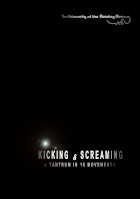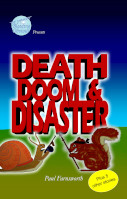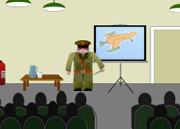The Beaufort Scale
Invented in 1805 by Frank 'Gusty' Beaufort to help prevent sailors from blowing off unexpectedly during perilous sea voyages, the Beaufort Scale remains the most widely used measure of wind speed and is still employed by professional windologists today. Its simple numerical scale can be understood by even those of moderate intelligence, who, if they stop dribbling on their shoes for long enough and concentrate, will grasp that the higher the force number, the windier the wind. However, if anyone should find the concept of numbers far too confusing, the scale also includes descriptions of everyday, relatable conditions, which will leave no one in any doubt about whether it's advisable to hang their washing out.
For reference, then, here is the Beaufort scale in full. You might want to jot this down; you never know when it might come in handy.
| Force Number | Description | Conditions |
| 0 | Rigid | No wind. The air is static, almost solid, like thick gravy or a melting Cornetto. |
| 1 | Slight Waft | The feeling you might get if, say, a beetle ran over your foot or the nape or your neck was gently brushed by a pervert. |
| 2 | Uninvited Pump | A sudden unexpected parp of warm air. You don't know where it came from, you don't know where it's going to, and by the time you realise you felt it, it's already gone. |
| 3 | Draughty Burble | A gentle but steady breeze, enough to rustle a newspaper but without turning over the page when you're trying to read the TV guide. Akin to the steady escape of air you get when you over-inflate an amphibian. |
| 4 | Flappy Throbber | A pulsing series of gusts which can interfere with headwear and cause the wing mirrors on a 2007 Nissan Micra to rotate. |
| 5 | Montrous Blast | A sizeable gust, usually sufficient to dislodge a small rodent from a drainpipe or to inconvenience an unwary cow. |
| 6 | Sustained Buffeting | A continuous stream of fast moving air that can strip the veneer from a dining room table, dislodge street furniture or spontaneously redirect traffic. It is not unlikely that you could look out of your front window during a sustained buffeting and see your neighbour cartwheeling down the street. |
| 7 | Squally Chuff | Can blast all the wax out of your ears in two minutes flat. This type of wind can also go round corners without slowing down, so sadly there's no escaping it. |
| 8 | Wild Quivering | Can uproot large trees and replant them in new locations. Under certain conditions, a bout of wild quivering has been known to rearrange all the vehicles in an underground car park. |
| 9 | Severe Tremble | Strong enough to blow all the words out of books, magazines and other printed matter, leaving just blank pages in its wake. |
| 10 | Thunderous Clattering | Winds powerful enough to drive clouds into the sides of tall office buildings, causing substantial structural damage and making it difficult to reach the coffee machine. |
| 11 | Exceptional Vicious Gustiness | Deliberately malicious winds that will trash your garden, upend you dustbin and carry off your greenhouse, usually while you're out. |
| 12 | Spontaneous Directional Tempest | Theoretically, this weather phenomenon is strong enough and precise enough to pick out an individual in a crowd and remove a single item of clothing in one concentrated blast. Although it has proven to be mathematically possible, it has never been observed in nature. One man did claim to be a victim when he was discovered wandering around Trafalgar Square without his trousers, although the judge who subsequently found him guilty of indecent exposure said he wasn't fooling anyone. |




















 Librarians
Librarians Boost for Industry
Boost for Industry Gerald de Scooter's Restaurant Guide
Gerald de Scooter's Restaurant Guide Domestic Eclipse
Domestic Eclipse Teaching Carrots to Fly
Teaching Carrots to Fly Fun Run
Fun Run Usherette Misses Out on Award
Usherette Misses Out on Award Anti-Assertiveness Classes
Anti-Assertiveness Classes Cooker Island
Cooker Island Mars
Mars


